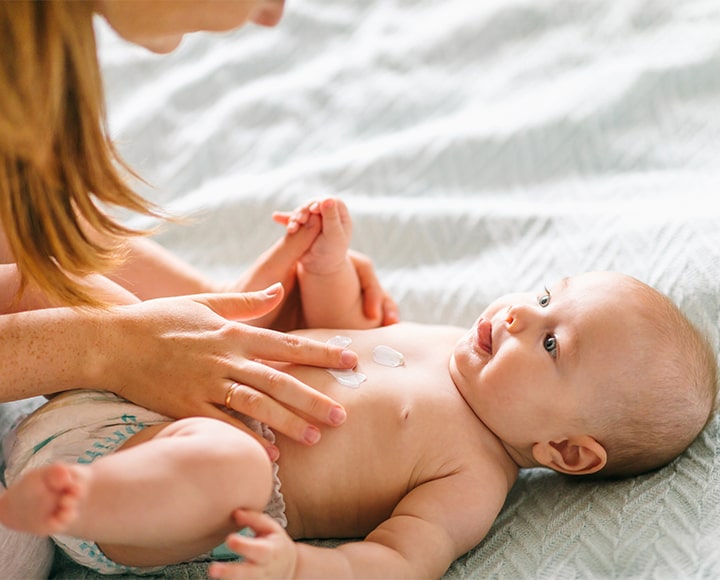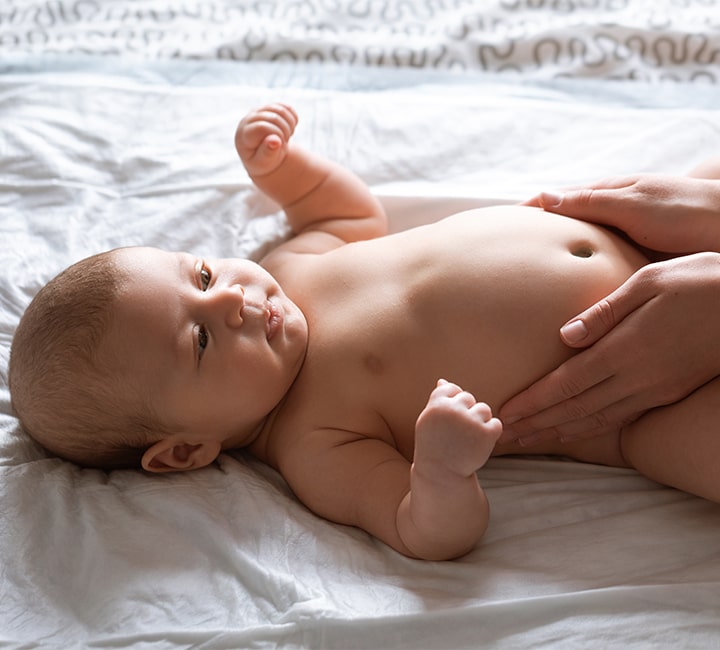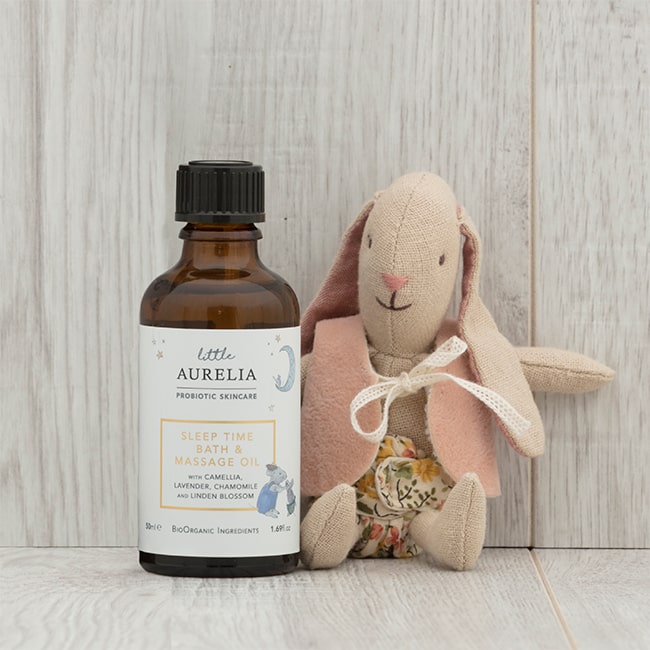Baby massage is a great way to bond with and soothe your baby. When included in a regular sleep or general care routine, it can provide a number of benefits to both you and your little one.
From the benefits of baby massage to knowing what to use and how to do it, discover everything you’ll need to know in our comprehensive guide below!

Friendly or loving touch, whether hugging, holding hands, or in this case massage have been known to stimulate the release of a hormone called Oxytocin.
You may be familiar with Oxytocin as the ‘cuddle hormone’ or ‘love hormone’, because of its role in social bonding. If not, you’ll almost certainly have felt its effects before, either when hugging your partner, or when holding or feeding your baby. It’s the hormone that gives you that warm fuzzy feeling of love!
For this reason, baby massage is a great way to socialise your baby, helping them to develop mentally, emotionally, and physically in response to your touch.
It has also been known to help babies sleep better, aid with digestion and circulation, as well as easing any teething pains they may be having. A study has also shown that baby massage can reduce the risk of jaundice in newborns.
As a parent, it can improve you and your partner’s moods too. Baby massage has been known to improve signs of post-natal depression and anxiety in mums and dads alike.
Top Benefits of Baby Massage
The best time to massage your baby depends entirely on their routine and how best they respond.
It is, of course, best not to massage when your baby is too full or hungry, as they may become restless or agitated. Ideally, you want your baby to be awake and settled when you massage them.
Follow our step-by-step guide below to make for the perfect massage for you and your baby…

Try laying them down on a blanket, soft rug, or play mat if on the floor. Otherwise, on a blanket or towel on the bed with you, taking measures to ensure your baby doesn’t roll off.
It’s important to try and develop a cue before you begin your baby’s massage. This can be by singing a particular lullaby, or by rubbing massage oil between your hands and introducing it to them so they become familiar with the smell and sound of it.
As long as you maintain consistency, your baby will come to learn what to expect, and you can judge from their response whether or not they’ll be happy to receive a massage from you.
The great thing about baby massage is that it doesn’t have to be complicated. Keep it gentle, and use a range of techniques to massage the whole of your baby’s body using gentle, rhythmic strokes on their legs, feet, arms and palms.
This is a multisensory experience for your little one, so keep them engaged by talking them through everything you do, or gently humming or singing to soothe them.
Maintain eye contact and adjust your strokes according to their response, be sure to repeat the ones they seem to enjoy!
Mould your hands to their arms and legs gently gliding your hands up and down, and use your thumbs in a circular motion on the soles of their feet and palms to stimulate blood flow.
Gently rub and roll along their fingers and toes, and steadily massage their shoulders and tum. Always ensure they are correctly supported throughout the massage
When it comes to infant massage, the oil or lotion you use must be as gentle and soothing as your technique, as you don’t want to damage or irritate your baby’s delicate skin.

Aurelia Probiotic Skincare provides a natural, cruelty-free solution in the form of their baby skincare range, Little Aurelia.
Crafted to take extra care of your baby’s delicate and sensitive skin, their Sleep Time Bath & Massage Oil contains only the most gentle carrier and essential oils to hydrate and soften. Alternatively, the Sleep Time Top to Toe Cream also works beautifully for massage and moisturisation, too.
1. If that was a lot to take in, we’ve summed up a few top baby massage tips for you to keep in mind before you get started!
2. When massaging your baby, always ensure you support their ankle or wrist with one hand. Do consult a medical professional if you have any concerns.
3. When massaging your little one’s tum in a circular motion, ensuring a clockwise motion rather than anti-clockwise.
4. Do seek out and attend baby massage classes and/or courses to socialise with other parents, learn new techniques, and speak to trained professionals
5. Do not attempt massage on a premature infant before consulting a medical advise
6. Be mindful of sensitive areas such as the umbilical cord, or areas which have recently been vaccinated. Avoid contact if possible
7. If your baby falls asleep, gets restless or upset, stop massaging
Follow these tips, and don’t be discouraged if your baby doesn’t *get* it right away! It’s a new and highly sensory experience that can take getting used to for both of you. However, keep giving it a go for short amounts of time if all goes well. Who knows, it could become a precious bonding activity between you, your partner, and your child!